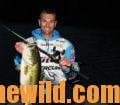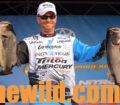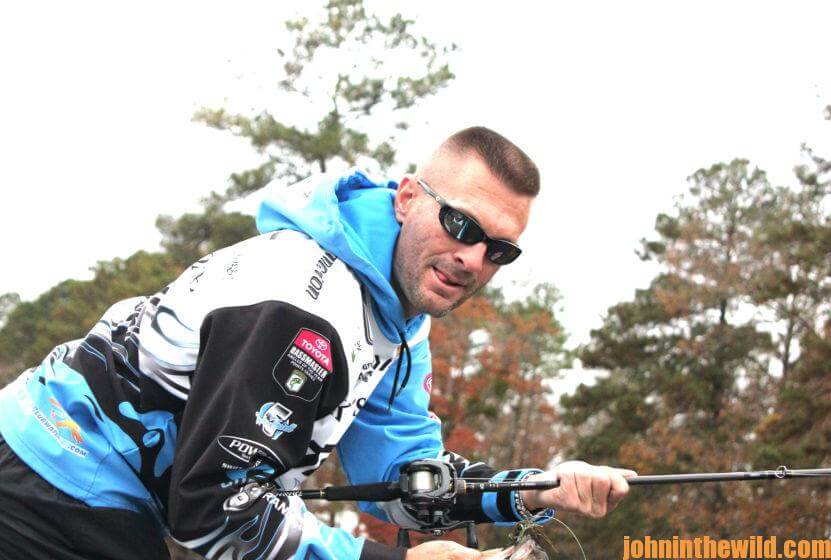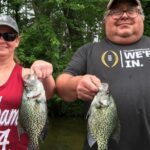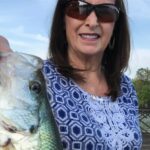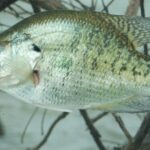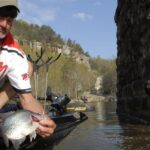Editor’s Note: In 2014, Randy Howell of Guntersville, Alabama, stunned the bass-fishing world by winning the Bassmaster Classic in what many knew to be a community fishing hole on Lake Guntersville. Today 47-year-old Howell has accumulated 45, top-10 finishes and more than $2.3 million in his career, including his Bassmaster, Major League Fishing and FLW winnings. Howell has been a tournament fisherman since 1993, and for the last four years he’s lived at Lake Guntersville. Today he fishes the Major League Fishing circuit.
* Lures, Rods, Reel and Line:
When the bass move to the back ends of the creeks is my favorite time to fish in the fall. After we’ve had several cool nights, there’s fog on the water, and we’re seeing the water temperature move from 80 degrees all the way to 60 degrees, the bass will show-up shallow on flats and in the back ends of creeks. If I’m fishing a lake I’ve never fished before, I’ll use my Lowrance mapping feature 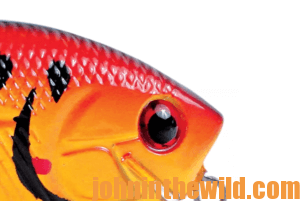 (https://www.lowrance.com/en-gb/lowrance/type/mapping/) on my depth finder to locate the creeks with well-defined channels that go all the way to the back ends of creeks. That’s where the channel starts to peter out, and you’ll see sticks and debris on the water.
(https://www.lowrance.com/en-gb/lowrance/type/mapping/) on my depth finder to locate the creeks with well-defined channels that go all the way to the back ends of creeks. That’s where the channel starts to peter out, and you’ll see sticks and debris on the water.
You’ll also see shad flickering on the surface, and that’s where I’ll start fishing my Livingston Howeller Square Bill crankbait (https://www.livingstonlures.com/). I’ll be fishing the Beauty Shad color or a chartreuse color. I like the square bill crankbait because I can bump it off cover and get a reaction bite. The bass probably won’t be actively feeding, but they’ll be holding against sticks, stumps or blow-downs waiting for a shad to go past that structure. The square bill has a hard vibration and wobble as it bumps into that wood structure and deflects off the object it runs into, which triggers the bass to bite. The bass will believe that the shad has injured itself and makes an easy meal. So, I want to have my square bill making contact with some type of structure from the time it hits the water until it’s all the way back to the boat. If I throw a square bill lure on 16-pound-test GAMMA fluorocarbon, the square bill will run 1-2 feet deep. If I want the square bill to run deeper, like 3-4 feet, I’ll use 12-pound-test GAMMA fluorocarbon (https://gammafishing.com/). This way with this lure I can fish from 0-4 feet deep in the backs of creeks, which is where the bass usually hold later in the fall.
Another lure I’ll fish in the backs of creeks at this time of year is a spinner bait. I’ll rotate my casts between the square bill and the spinner bait. I like a Hawg Caller (https://lunkerlure.com/) 1/2-ounce spinner bait with a chartreuse-and-white skirt with a combination of a willow leaf blade and a Colorado blade. One of the blades will be silver and the other gold, and I’ll run the spinner bait just as I do the square bill. I want it to crash into limbs, stumps or any type of structure I locate in the backs of the creeks. If there are docks at the backs of the creeks, I’ll crash the Hawg Caller into the pillars, posts and any-other structure holding the dock in place. The cooler the weather gets, the more I’ll use the spinner bait instead of the crankbait.
To fish a spinner bait, I like the Daiwa Tatula Elite 7.1 reel (https://www.daiwa.com/us/contents/rods/tatula_elite/index.html) on a 7-foot-2-inch medium-heavy Randy Howell Universal rod, the perfect rod for fishing a spinner bait. I’ll have that reel filled with 20-pound-test GAMMA fluorocarbon line. If I’m fishing in super-shallow water, I’ll use the 20-pound-test line. If I want the spinner bait to run deeper, I’ll use 12-pound-test fluorocarbon line.
As the weather cools down even more in the backs of the creeks, I’ll start fishing a Lunker Lure Ultimate Rattlin’ Jig (https://lunkerlure.com/product/ultimate-rattlin-jig/). I’ll use a white-flash- colored skirt, which is white with silver flake, and I’ll put a Yamamoto pearl-colored twin tail trailer on the back of the spinner bait. I try to swim this jig either just on the surface or barely under the surface and throw it around trees, stumps and any kind of debris I can locate in the backs of those creeks. I’ll pop and reel the swim jig really fast – trying to get a reaction strike. I’ve learned that the swim jig is a great bait to catch a big bass at this time of the year. I’m using Daiwa J-Braid 50-pound-test line while fishing a swim jig, and I’ll be using the Tatula Elite Skippin’ Jig Rod that’s 7-foot, 1-inch long with an 8.1 Tatula Elite reel. I try and skip that jig under trees and docks and under cover out under the water.
* Depth Finders:
Most professional bass fishermen will run four depth finders on their boats today. They’ll have two depth finders on the front and two on the console. However, since Lowrance (https://www.lowrance.com/) has introduced the HDS 16, a 16-inch screen depth finder, I’m running one depth finder on the front of the boat and one on the console. If I wanted to, I could run  six different screens at one time and see them all clearly. The 16-inch screen I have is attached to the console, and on the front of the boat, I have the Lowrance HDS 12. When I’m fishing in shallow water, I’ll mainly use my front depth finder to show me the creek channel and the depth of water where I am. The Lowrance C-Map has very well-defined channels and the depths of water on each portion of the channel. It also has a shading device. So, if I’m targeting water that’s 5-feet deep or less, that depth will show-up as red on my map. If I’m going toward the back of a creek, whenever I see the red shading, I know I can start fishing. The graph also will tell me if the bottom is soft or hard because I’m looking for shallow water with a hard bottom in the backs of these creeks.
six different screens at one time and see them all clearly. The 16-inch screen I have is attached to the console, and on the front of the boat, I have the Lowrance HDS 12. When I’m fishing in shallow water, I’ll mainly use my front depth finder to show me the creek channel and the depth of water where I am. The Lowrance C-Map has very well-defined channels and the depths of water on each portion of the channel. It also has a shading device. So, if I’m targeting water that’s 5-feet deep or less, that depth will show-up as red on my map. If I’m going toward the back of a creek, whenever I see the red shading, I know I can start fishing. The graph also will tell me if the bottom is soft or hard because I’m looking for shallow water with a hard bottom in the backs of these creeks.
Once I move out to deeper water, the main feature I use is the LiveSight on my front depth finder to see suspended fish and suspended bait. Then I can target those bass much quicker than if I didn’t have this feature. If I’m fishing in deep water, like many of the northern lakes with numerous smallmouths, I can use the structure scan and the side scan to find the deep-water structures where the smallmouths like to hold. Especially when I find large boulders in deep water I want to use the drop shot technique. Another fishing aid that I use quite a bit is a T-H Marine Hydrowave (https://thmarinesupplies.com/pages/catch-more-fish-with-hydrowave-technology) on my boat. I keep it running nonstop and, on the setting called delayed schooling. It has a 30-second cycle, meaning it runs for 30 seconds on and then stops for 30 seconds. This machine makes the sound of shad schooling on the surface and bass blowing up and attacking those shad. I’ve found that this device really fires-up the shad and other bait fish. They’ll start flickering on the surface and jumping out if the water around my boat. When I cast to those bass, they’ll often chase my lure right to the boat and attack just before I take my bait out of the water. The Hydrowave is especially effective when I turn it up really loud.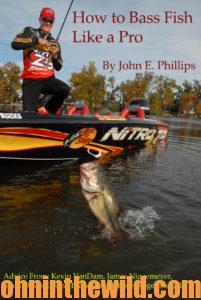
To learn more about bass fishing, check out John E. Phillips’ book, “How to Bass Fish Like a Pro,” at http://amzn.to/YpoJvD, available in Kindle and print versions, and Click here for the Audible link. You may have to copy and paste this click into your browser. (When you click on this book, notice on the left where Amazon says you can read 10% of the book for free).
Tomorrow: What Are Some Bass Seminar Questions Randy Howell Hears

